Shooting fast with a Leica
By Robert Boyer
The first thing to get out of the way is although I am writing this with the Leica M series in mind it applies pretty much to any camera. I do want to apologize up front if I sound at all like a zealot on some of my recommendations and things to think about. Please treat everything you read here as things to think about, not single minded magic answers for a one size fits all world of the 21st century. There goes the first zealot sounding thing – Yes I believe that way way too much consumer demand for the magic press button that fits all things and the marketing that goes with it creates a ridiculous expectation that you can set it and forget it. You know that magic secret setting that you deal up and you are done for the rest of your life, never needing to every thing about it again. Heck that setting will even point the camera and decide when to take the photograph, you can just go to sleep. You want to argue about this? Take the “easy button” advertisements from that big box office store as my one and only exhibit as proof.
Okay – now expect to seriously practice what I am going to suggest here. Yep, every single thing I recommend is going to take some considered effort and more than one try to even get close to helping you shoot fast. If that is not your bag just get a Nikon D3, set up the AF to continuous all area predictive and continuous hight and pray. If you shoot with shorter lenses and close up distances this won’t even work. Trust me I have a D3, it’s amazing but there is not an AF system on the planet that deals well with <50mm wide apertures and close up in terms of nailing shots without a lot of practice. In a whole lot of cases it’s better to turn AF off. If you shoot 300mm+ lenses from 50ft+ this is where AF shines. So here we go in not any order – you have to decide what will work in any give situation with in the parameters I have laid out.
One more thing before I launch into some simple things you probably already knew but haven’t tried in a long time. My definition of shooting quick is not having your camera in the bag, turned off, having no idea what the light is like, exposure is, or that you are even going to take a picture – then all of a sudden something pops out of the word work that presents it self for one and only one image and that image has to be perfect. If this is how you think fantastic photographs are made you are in fantasy land. In reality you have to be prepared, your camera has to be prepared, and you have to watch the situation develop. You actually have to spend time on that subject before the image presents itself. This is how great images are made. You might even have to spend a lot of time with the subject. Stumbling around half asleep with your camera dangling by your side, stumbling on that “great image” and expecting to nail by raising your camera to your eye and pressing the button once is not going to cut it. On with the show.
1) Get exposure out of the way long before you have to take the image. Very very rarely does this mean exposure automation. Even with great exposure systems this is very rarely the answer. Getting it out of your mind and your camera set to go is step one. In the vast majority of circumstances there is only one exposure that you need – you do not need to make 1/3 stop adjustments continuously while shooting the same subject in the same light. Sure auto will make all those adjustments – who needs or wants that because your subject turned one way or the other or there is 2% more sky than there was before. No need – set your exposure and be done thinking about it. What about changing light? Well to be blunt there are only two or three different exposure setting you need to know in just about any shooting situation. Figure out what they are and know them. As soon as your subject is in lighting scenario one go to that setting, scenario 2 go to that setting. etc. I can get away with two in almost every environment on at a given time of day. Those would be stuff that I care about exposing is in shadows and stuff that I care about is in the light. if you don’t quite understand what I just explained then stick with just the one you happen to be in right now. Only think about it again when your subject changes or you move into different light. Fiddling with this or have auto do it for you so you can “compensate” is a giant distraction – or a bunch of maybe it was okay exposures.
2) Know your lenses, your apertures, and your camera. Once you do you will know when to really really focus on focusing or just shoot. Here is what I mean by way of example. If you have a .72 or higher magnification body and it is not goofed up, the RF precision is such that you can easily focus a 50mm f0.95 for a 90mm f2.0 close up and be in absolutely perfect focus. This kind of precision is required close up for those lenses at their closest focusing distances. As your subject gets farther away than closest focusing distance, as your lens gets wider, as your aperture gets smaller, this kind of precision and care are not required at all. So what does that mean to you, well if you are a regular person like me that shoots a 50mm Summicron and a 35 Summicron and you shoot at slightly longer distances, or with slightly smaller apertures than those beasts… learn to relax a bit.
Don’t waste time focusing back and forth and back and forth to make absolutely sure that the rangfinder image is absolutely as perfect as it can possibly be for every single lens/aperture/distance. Only do it when you need to, otherwise take it easy. Turn the ring quickly until it looks right with not too too much time examining that center spot and shoot the damn picture. Once you get over the need to be absolutely sure the RF spot is absolutely perfect as it can possibly get you will be astounded how much faster you are. How do you “know” when you need way more care vs less? A reasonable amount of practice.
3)Use zone focusing a lot, especially with 35mm and wider. Practice guessing distances of things you will be surprised out how good you can get really quick at common things like 3 feet, 5 feet, 8 feet, 10 feet. If you can guess within a reasonable tolerance for those distances which are important to you photographically, you have it made in the shade. Just take a look at your handy dandy DOF scale and really really get to know how the plane of focus falls compared to those guess distances. Even with a 50 this works great.
See a subject, set the guess distance and shoot. Alternatively set a distance and aperture on the lens that will cover everything from say 4 to 8 feet and shoot away without doing anything with focus. With a 35 or 50 this is where you want to be anyway in terms of distance. Remember when I said know the exposure and set it. If you shoot like this with the focus preset to a zone I cannot imagine shooting faster. There is nothing faster. NOTHING. If you can press the button ypu can nail the image.
4)Prefocus – anticipate the direction and the action. Pick something where you want to snap the image and focus on it. Now follow your subject and when what you want is in focus gets to that point nail it. This works better than you think it does in a lot of circumstances you figure out which ones. It does take some practice.
5)A variation on the theme just mentioned – use your frame line menagerie to measure stuff. In other words focus exactly on a plane you want – say an eye, and take note of where your frame line cuts across the subject. Now move back and forth – or you subject is already doing that and when the time is right nail it. I occasionally do this when I am doing a really tight subject at a really wide Aperture and they have some towards/away movement because they are animated. It works, but this one takes more practice and care than any of the others. I only do this with RF cameras and AF SLR’s – AF systems in this context are useless based on my experience – either they lack the right focus points to use or even confirm AF or they are not accurate enough/fast enough at f 2.0 and wider with 50mm and longer lenses. The only sure fire way to deal with this situation and an animated subject is with good ground glass where you can SEE the focus everywhere. Take this suggestion as a specialize one that is sort of a stand in for a good ground glass SLR focusing screen, Like on my Hasselblads and my Nikon F2/F3.
There you have it! RB’s 5 quick and easy steps to fast shooting bliss (no refunds, no returns, special conditions apply, does require practice – practice not include with post)
Feel free to share what works for you I am always interested in creative ways others have found to shoot fast in various circumstances where I live (shorter lenses close up). One can never have too many things in his bag of tricks.
From Steve: Thanks Robert! You can read and see more of Robert Boyer at his web site/blog HERE.
[ad#Adsense Blog Sq Embed Image]

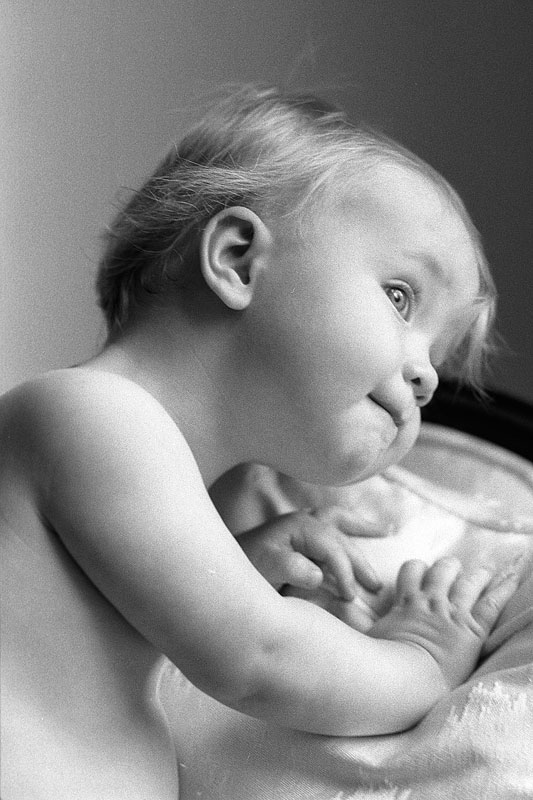
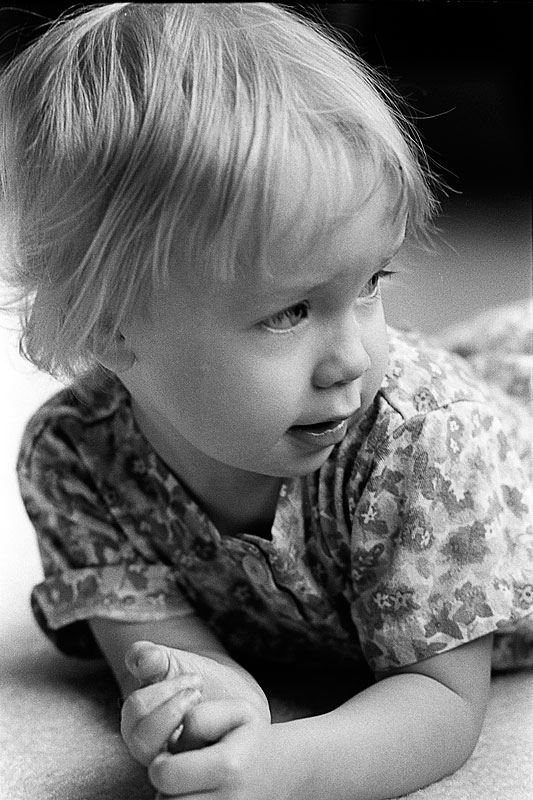
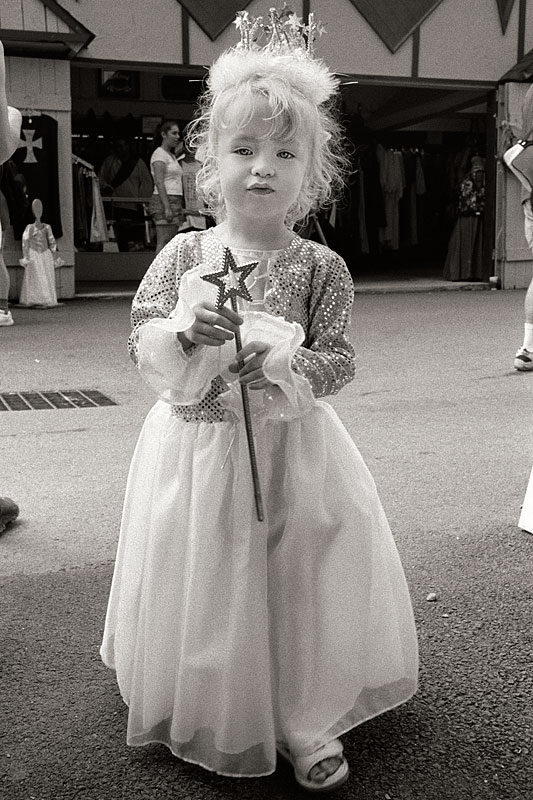
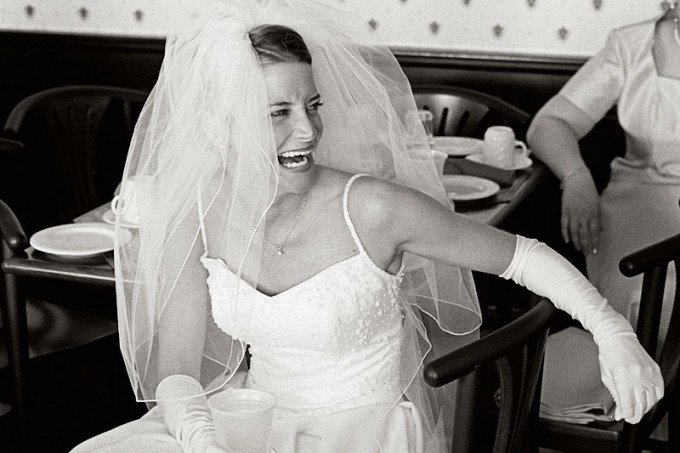
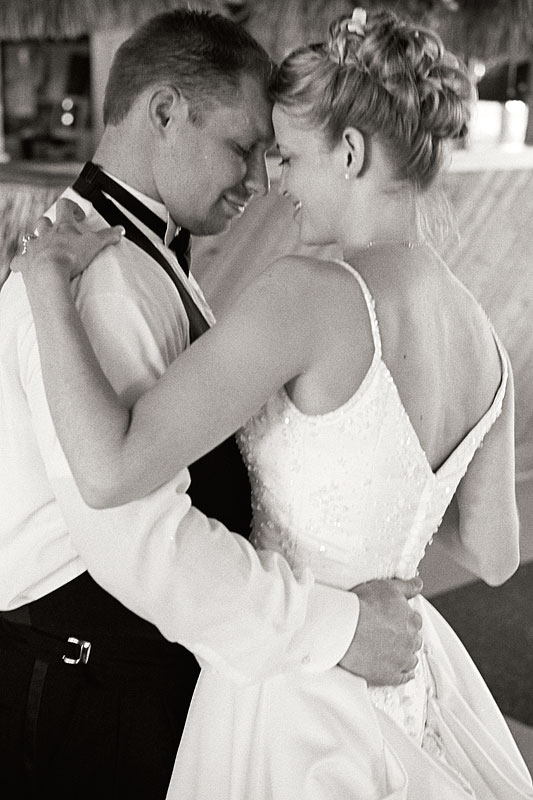


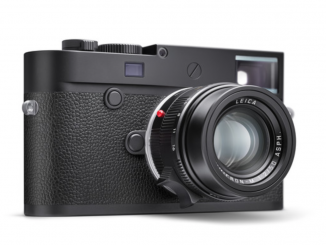
I’ve been thinking about ditching my dSLR gear for over a year now and eyeing up a Leica M9. I finally took the plunge about 3 weeks ago and purchased a used M9 and a new 50 Summilux ASPH, and am really enjoying photography again.
I’ve found this article invaluable as I am guilty of a lot of the “wrongs” outlined by Robert, especially when it comes to focusing and trying to get the image in focus at every aperture at every distance. I’m sure these are common mistakes made by a lot of newbies coming to a rangefinder.
Some of the points are common sense but sometimes need to be said over and over to let it sink in and put into practice…regularly.
I’ll keep coming back to the article from time to time as a reference.
Thanks Robert
Hello,
Just checking whether it went through, not sure at the moment about the URI. I would love some advice, please…
I will soon have a Leica R6.2 and an also have chosen an elmarit 60mm macro lens.
Very expensive but I want to take it more seriously and get a lot of practice and am looking forward to using an SLR again! I should have bought the wide angle first because the dragonfies are not
prolific again until the spring, and these insects are my passion.
I also want to buy in a few month’s time a reasonably priced wide angle R lens for dramatic landscape shots. I admire professional photos and although I have several albums full I would
like wide angle, not fish-eye curved photos.
I have in mind the old version of a super elmar R f/3.4 15mm which is heavier
than the ASPH version, but cheaper.. The 19mm elmarit apparently flares up too much and the f/2.8
again is the more expensive later version.
What would be a good choice? I intend to travel with my son around the outback of Central Australia in June I hope. Would I get good shots at the widest aperture without a tripod if I use 800 speed film? I don’t know whether the f/2.8 faster lenses are a lot better..
Typos? You folks are worried about typos?
As usual, Bob, great advice given generously by a true expert. Thanks.
Les
Thank you so much for the tips from the articles as well as the replies to the thread.
So much for proofs, the proof is in the pudding!
Take a M8 with a 24 Elmarit lens, set the hyperfocal setting to 4,90m/f4 and anything from about 2,50m is in focus and relative sharpness. The 24mm lens will give you a 35mm equivalent and you can fire away! Great for indoor and outdoor!
Joseph,
Congrats on the new camera – what a beautiful first M camera to own. Good luck with it and keep at it. The reward is worth the investment. The secret with exposure is to think about it – that’s fine but then set it and be completely done thinking about it until the light actually changes. This should become automatic real fast. The set it and forget it until you actually NEED to deal with it again is a huge relief from the subconscious distraction of constantly checking your auto exposure – programmed – matrix metered camera to see if it decided to do anything daft because your subject change position in the frame.
There are really only a few situations where it is more convenient to have the camera re-decide exposure between every shot. Out of habit I use AE lock even when I let the camera decide. Then I just shoot – why the heck do I want to check and see if it decided something different every shot? Why the heck would I want even slight exposure variations from one shot to the next of the same subject in the same light?
RB
RB
Thanks for the great article and the beautiful photographs,Robert. I just bought my first rangefinder, an M3 with a 50mm, and will implement your 5 step plan next time out. I have to say that since I went down this path, after many years of using film and then digital SLRs, I now find myself thinking about exposure all the time, even when I don’t have a camera with me. I look forward to your future posts.
Joe
Great article and really insightful thoughts Robert, many thanks for your efforts!
I also appreciated your straight talk re: Spelling mistakes and the other BS in comments about your article, far too many hyper critics on the www as it is so ignore such stuff and keep true to yourself. Look forward to reading further articles in the future. 🙂
Max,
That is exactly what makes this endeavor more challenging than say… golf or something. The number of things that come together that makes an image work or not. The most you can do is be as prepared as possible.
RB
For sure, Robert, and I still rather waste 10 rolls of Tri-X per day than play golf 🙂
Thanks Max and Robert for your comments. The fascination is on-going!
Sorry but photography isn’t more challenging than golf, even when you try to shoot fast (in either).
Excellent tips RB. Thanks a lot. I like the one about not worrying too much about getting precise focus and relying more on the zone or sufficient depth of field to get the focus. I have s tendency to waste time with this and it has cost me a lot of shots. Going to implement your advice this evening with some tri-x. Thanks a lot for these.
1/125, f8, 35mm, focus set at 3m’s; whatever happened to that? 🙂
That works – unfortunately 90% of my shots are at f2 or f2.8. Which can work the same way but you have to be a bit better at guessing distance. I just gave a more generic zone focus description.
RB
I know Robert; I was just (t-i-c) referring to the old trick that produced a lot of sharp but also boring photographs.
That is one thing I have to thank Steve and his blog for: the judicial use of shallow dof/large apertures. It doesn’t make life easier, but it certainly has the potential of producing more interesting images, instead of flat-as-a-pancake snapshots (with brilliant IQ… 🙂 ).
I’m still learning to control that shallow dof beast!
Michiel,
That is true but at both ends of the spectrum. There are way too many photographers out there who play the DOF game to death and simply try to make up for lack of vision and/or compositional skills, turning out boring photographs. If you take the one and only Cartier Bresson for example, it does not look like he was ever concerned with large apertures and yet he accomplished more than anyone we know to this day. Streetshooting with a rangefinder wide open may yield some interesting shots, assuming one pays attention to more important details, but it will also lead you to miss many fleeting moments. It’s just the nature of the beast. Practice certainly helps but, most of the time, unless it’s a posed shot, luck has a lot to do with it 🙂
Sound advice, Robert. Thank you. I’m off practicing.
Wow Robert,
That was a lengthy explanation with some of it going over my head. I’ve for a long time been suspect of the zone system especially since most cameras have a center-weighted meter, and its hard to fill the meter with only “one” zone. In general, I usually find I over-expose black and white film. I’ve never been brave enough to try the N+ or N- rule in development, and basically develop using the same procedure every time. I usually print on mutligrade paper as opposed to one grade. I select my contrast levels by a combination of a 1 and 5 filter after making a test print (grid). I look for about where I want the blacks to be and about where I want the whites to be and dodge and burn locally.
Anyway, thanks for the info. I guess in all honesty, I usually do not sweat setting the exposure of a scene and for street shooting often just meter off the concrete if I think its a good grey color. Since I don’t have access to a dark room right now, I am just adjusting my negatives in photoshop which allows for a good amount of contrast/tonal control, but it seems a lot harder to master than classic
Dear Robert, Thank you again for the great article. There is a consortium of international readers who enjoy your posts on Steve’s site. The updates you made to the article really helped with their understanding. Thank you so much for sharing your gift of photography and teaching your talents to all your followers. Your photographs support what may be some of the most important photographic advice put into writing! Again, a humble thank you! -Jackie
Jackie,
Wow, such wonderful praise. Thank you. I will definitely proof read next time – I absolutely got your meaning on your first comment. Let’s see what shall we write about next that I normally wouldn’t put on my blog?? It can be Leica, Hasselblad, or film related because my blog readers hate that stuff. Well not really hate it but really don’t give a hoot.
RB
Ps.
Steve probably won’t let me back after this typing/grammar/punctuation disaster.
RB
I really enjoyed the article – some really useful tips and ideas. Looking at the images they certainly can be made to work too.
Other picture didn’t display right[img]http://farm5.static.flickr.com/4079/4913631026_9fa94c0c62.jpg[/img]
Robert – Loved the peice, loved the pictures.
I have to agree that we are way to worried about nailing the focus with the wider lenses. I usually shoot my 35 and 50 cron at f/2. I just like the look. However, I have noticed that I get acceptable sharpness with just one quick movement of the focus knob. Zone focusing is great, but you lose so much in terms of subjection isolation that I rarely use it. That being said, pre-focusing, establishing good exposure before really helps you catch the right moment.
BTW – I am attaching one of my favorite pictures. I took it using zone focusing, I had pre-shot into the sun and had stopped down so the subject and the background would be in focus. This was for a project called For Lease – documenting the hardships in San Bernardino, CA[img]http://farm5.static.flickr.com/4079/4913631026_9fa94c0c62_b.jpg[/img]
Awesome shot, and perfect example of good use of zone focus. I would not write off zone focus only for use with giant DOF – I use it at f 4 and f 5.6 prefocused and 3 or 4 feet and get perfect subject isolation on many shots. You can probably do it with the 35 at f2 and have your subject close enough at a predefined 1 or 2 foot depth of field that it will work great.
RB
RULE #1 – Do not count on Steve to proof-read, spell check and pickup mistakes 🙂
Very sound advice and fun to read, Robert.
Your tones are very nice i.e. nice balances of dark and lights, but your whites are actually white and not grey. Do you use the zone system when metering?? For example in the shot of the bride, did you over expose for the dress and skin??
Nick,
These are quick and dirty scans of FILM meant to be printed on real paper and are exposed and developed accordingly. My scanner has a giant issue with negatives that have real silver vs dye. They would be fine with a drum scanner or maybe even a newer Imacon but a crappy home scanner isn’t gonna cut it. Way back in the day (and still for me) when I shoot film my primary objective is to print on silver paper. Typically I calibrate my exposure and dev to print on Grade 2. Most film black and white film shooters that use digital output as their primary medium calibrate more for a Grade 3 target (35mm shooters used to do this prior to digital as well) because it scans “better” because it requires less dynamic range capability of the scanner.
The reason I target Grade 2 vs Grade 3 is simply that I like the way a beefier negative looks on lower contrast paper vs a wimpy-er negative on higher contrast paper. With film you have two philosophies that you can lean towards – one, develop less and have “smaller” grain clumps then print on higher contrast paper which makes those smaller clumps have higher contrast because the get blacker or…
develop for more CI and have slightly “larger” grain and print with less contrast there for having less contrast (less black) for those grain clumps. I chose this way for my personal aesthetic a long time ago.
As for the Zone system – yes I sort of use the zone system but I obviously don’t develop each frame on a roll of 35mm film individually. I am more of a Weston practitioner of B+W than I am an AA devote. Contrary to popular interpretation the zone system has nothing to do with “not blowing the highlights”. It also has nothing to do with compressing the range of a scene so that it will print with detail sans dodging or burning. It has to do with achieving the contrast you want. For me that is achieving what I consider a pleasing local contrast for a given subject.
Forgive the long explanation here but I cannot help myself when faced with a question such as yours. I used to do workshops on this and the very first thing I used to do is knock the strange Zone system interpretation out of peoples heads that read AA’s books and then misinterpreted a “recipe” for exposing/developing because they “calibrated” their film. The exercise was this…
We all went out on a sunny day and shot a typical landscape with land/foliage/sky/clouds. I exposed it so the land was in zone 4’ish and let the sky fall where it may. Then developed to a normal CI or sometimes even N+1. The “zone” guy’s would dutifully expose the land at zone 3 and habitually bring the sky and or clouds down to zone VII by N-1 or N-2 development. We made prints.
Guess what – the “zone” people’s prints were flat and lifeless but had tones of detail. My prints look like they were backlit with a simple sky burn with the same detail but shit loads of local contrast everywhere. Lesson? That is not how you use the Zone system.
Second exercise – Caucasian people – especially women do not NOT NOT have skin that looks good at zone VI it’s way too dark. Skin in light is not zone VI – I guess that is why ole’ Ansel’s people shots blow so bad.
So does that answer your question?
RB
Ps. scanned film looks NOTHING like prints from a grain contrast and a million other perspectives here is what skin looks like at Zone VII and VIII with a hint of IX here and there at least as seen on paper.
I would show full frame but… Steve’s site is US based and there are way too many ridiculous sensitivities to be dealt with.from the mainstream audience. An before you ask… Yes there is plenty of detail in the blacks but that is not the way I print it.
[img]http://photo.rwboyer.com/wp-content/uploads/2010/08/2002-006-07.jpg[/img]
Crao ti cut’s it off instead of shrinking it. Oh well you get the idea even. I’ll post a resized version if I have time.
RB
Okay here is an itty bitty one.
[img]http://photo.rwboyer.com/wp-content/uploads/2010/09/2002-006-07-4.jpg[/img]
Ooops forgot the technical details for those that care.
This was not a Leica shot – It was shot of a Hasselblad 503CW (actually a yellow covered one if you remember those) with either an 80 CFe or a 100 CFi (I forget as I used both of those extensively) hand held.
Film was HP5plus developed in PMK pyro The prints that I care for are on Ilford Gallarie and Adox MCC (recently printed as a test for that paper).
Such a lovely pacey narrative… really enjoyed the pithiness of it.
and that is what makes this site interesting… people share their passion and their wisdom because they care about what they do.
but yes I will be printing out the said writing and getting out my yellow high lighter pen to do my own extensive reseach marking.
Hi Robert,
thanks for your practical advice. When you shoot your 35 summicron, what aperture do you normally use? Are you shooting it wide open or do you work a lot with the aperture settings…
Robert,
I use my 35 summicron wide open a heck of a lot if I can and the film speed/lighting agree. If I must shoot really fast I do stop it down a little bit – for people I rarely go smaller than 5.6 which gives me a comfortable zone in the distance I like my subjects.
Obviously If I have faster film and am shooting in bright light or I really want a lot of DOF I will go smaller but that is a rare occasion for me.
RB
Outstanding article Robert!! I cannot understand how one can be focusing on spelling and grammar when reading something containing so much passion! Personally I was really inspired and cannot wait until I get my first rangefinder. 🙂 (Shooting Leica glass on my GF1 for now..)
(I’m married to a Swedish/English teacher so I do get my own dose of “corrections” all the time 😉 )
Cheers everyone and keep the great articles coming!
Anders
I can’t believe no one mentioned the photos, only the typos 😉
AMAZING shots, Robert, all of them, but I have to say that the expression of the princess girl is absolutely breathtaking 🙂
Thanks for some great advice, I’m starting to practice these tips today!
Frode,
Thanks – FYI, The first two were with a 90mm. The wedding – a 50mm, and the princess a 35mm.
RB
proofreading is like sharp focus – it’s not as important as the content.
This article is outstanding – best advice I have seen in ages.
I personally don’t mind reading articles with typos, showed you wrote it quick, and things are just more simple and to the truth of the matter in that context. Grammatically perfect sentence structures can stay in the magazines. Cool quick article.
Richard,
I think you mean site – not sight, unless that was some sort of odd pun.
As you can see, I can proof, when I actually do. Again I did not proof this – I wrote it and sent it. Sorry about that. If I had to take a guess Steve probably did not proof it for me as he wouldn’t expect it to have so many horrible atrocities as this did. Thinking back to when I wrote it, I did do it in my email and as a matter of habit I NEVER proof my emails. I guess I was on autopilot e-mail mode, rather than article – proof – edit mode.
RB
Oh, and yes I do have some conviction in what I do.
RB
Great Article!
The typos were a tad annoying, but it oddly re-inforced the heartfelt confidence you have in these Tenets of Photographic Practice. Gave it a rushed, slightly breathless factor.
My question is: Didn’t Steve Read This Before It Was Posted? His writings on ‘his’ sight have always seemed very grammatically kosher (the spelling,too) so I’m wondering if that’s been because his Word Processor’s Spell Check and Grammar Check has been making him Look Good!
🙂
Peace
Richard in Michigan
All seriousness – yes I should have proofed it but I hate doing that where I wrote it – in email.
Please accept my apologies.
RB
Dear Robert, Great article. Touch it up with spelling and grammatical error corrections… especially in #5. This will make it easier to read. What you have to say is super valuable and it will benefit many to get the message across exactly as you mean it. 🙂 –Jackie
Jackie,
You have to excuse the mistackees, yu neid to understood that I hat profreading and i jusf got don proofreeding a giant bok taht i rote.
Sory.
BR
LOL!
At least one poor soul on this planet get’s my humor. If you like that get a six pack in me and I’ll have you rolling on the floor.
RB
HAhahahaha!